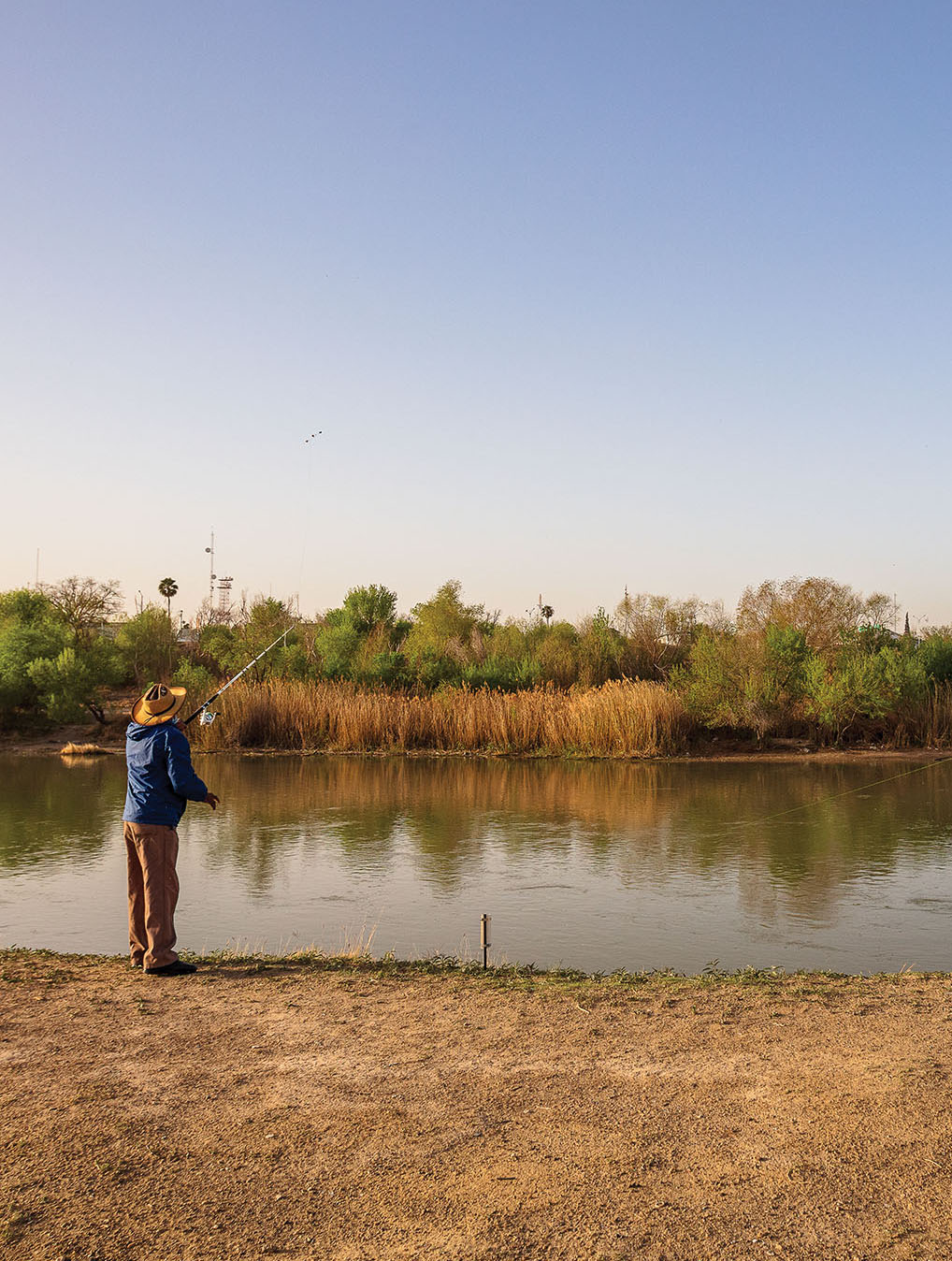Always Both
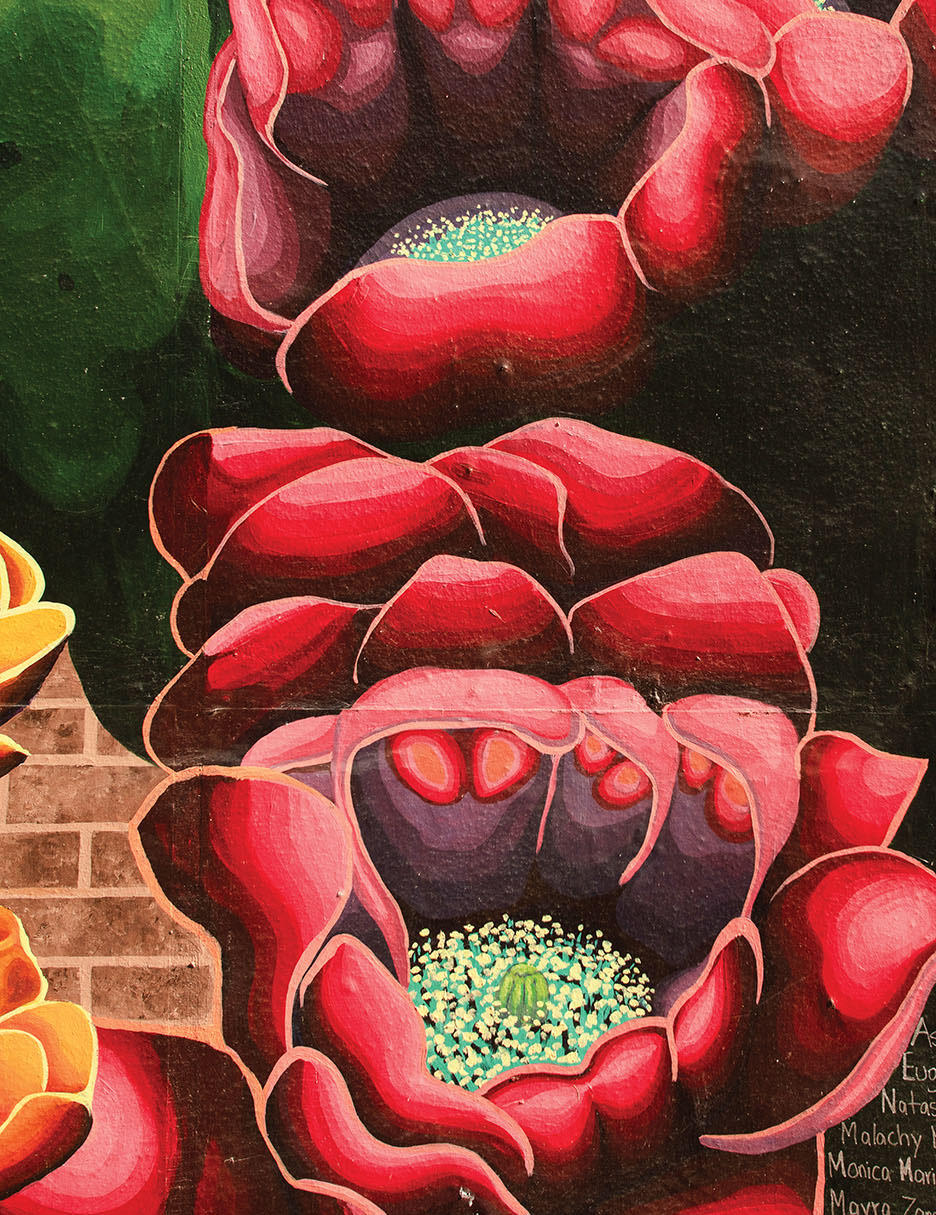
Photographs by Christ Chávez
El Abrazo mural at Hotel Rialto; John Peter and Consuelo Montalvo Los Tres Laredo Park
Y
Your hometown is like your body—so familiar you stop seeing it, so familiar you think you’ve seen it all, though there are whole geographies only visible with a specific angling of mirrors. Your hometown is like your face—just OK, until you look back at old photos and realize you were beautiful then. How could you not have noticed?
Laredo is a flat 150-mile drive south from San Antonio, where I live with my husband and two kids, past small towns and the mesquite and cactus that thread the landscape of my childhood. Follow Interstate 35 until you reach its end—or, rather, its beginning—and there you’ll find Laredo: a city in between two countries, a city that is and is not American, is and is not Mexican. An interstitial place of both and neither.
I’m a third generation Laredoan, and when I was growing up, 99% of the city’s population was of Mexican descent. Now it’s closer to 95%, which still makes it among the least ethnically diverse cities in the U.S., creating a bubble for those of us who grow up there. Many have family living just across the bridge in Nuevo Laredo, Mexico, and many others can trace their Texan roots back to the first Spanish land grants along the Rio Grande. Today only 10% of the population speaks English alone, while the remaining 90% are bilingual. Anywhere you go in Laredo, you’re as likely to hear Spanish as you are to hear English, and often both in the same sentence in that third language dubbed Spanglish.
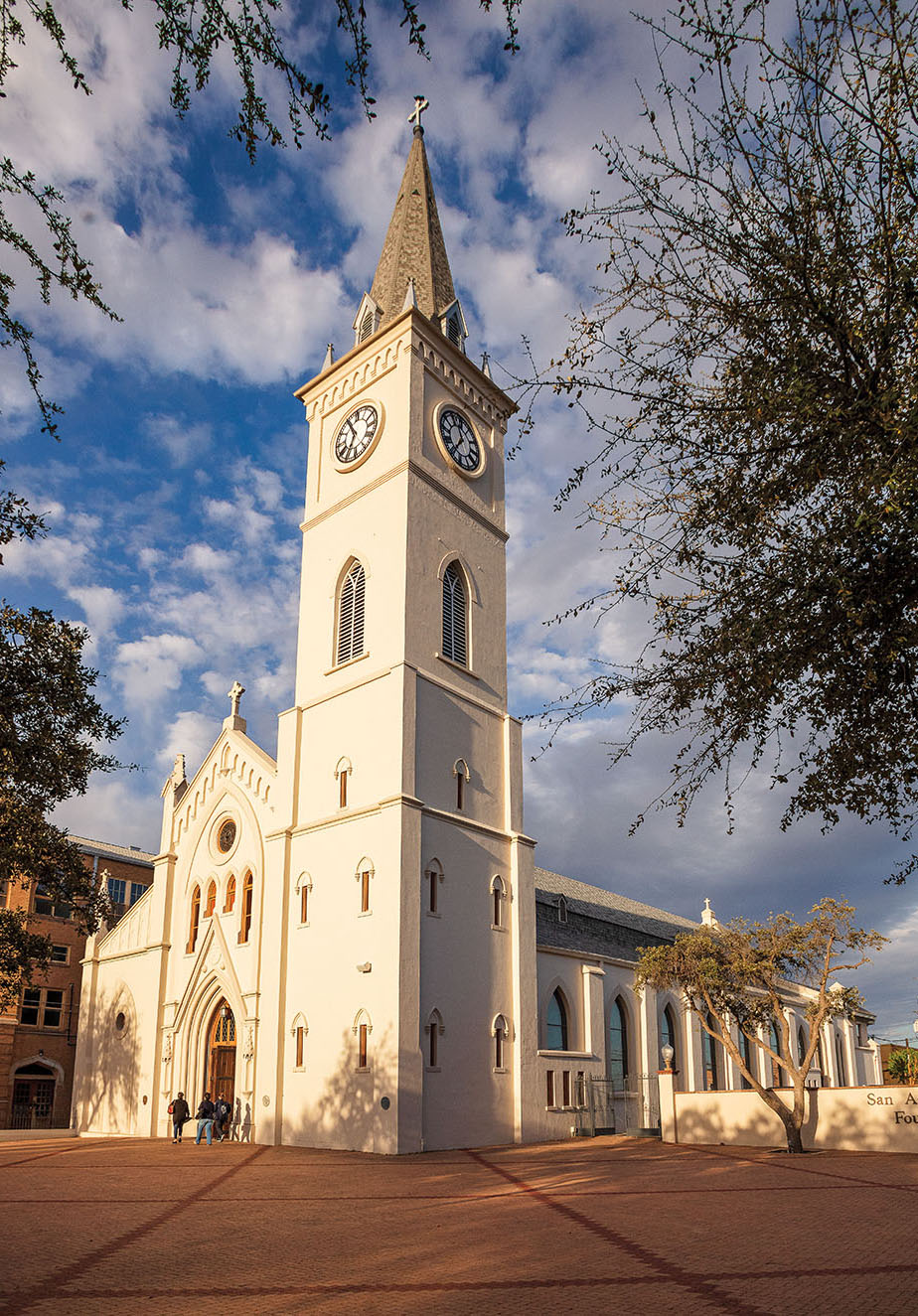
With a population of 270,000, you can’t exactly call Laredo a small town. But growing up, when the population was half that—before the North American Free Trade Agreement went into effect and turned Laredo into the largest inland port—it often felt like one. At the Chick-fil-A in Mall del Norte, where my family ate lunch most Saturdays, I wondered how my parents could possibly know people at every table. Once, when I was in eighth grade, they took us to watch Titanic at the new Cinemark Movies 12, and the entire row in front of us was occupied by the popular kids in my class. I slunk low as my dad whispered, “Was there a field trip you didn’t know about?”
When I was about 12, I searched for my last name in the phone book. There were hundreds of us, line after line until the letters blurred, until Gutierrez looked like hieroglyphics. I’m not sure what I was looking for, but what I felt was a throbbing sameness, the sense that Laredo was one immutable thing, and I was just like everyone else here. I thought I’d have to leave to set myself apart.
I was wrong. Laredo exemplifies duality. Scholar Gloria Anzaldua, in Borderlands/La Frontera: The New Mestiza, describes the border as “… una herida abierta (an open wound) where the Third World grates against the first and bleeds. And before a scab forms it hemorrhages again, the lifeblood of two worlds merging to form a third country—a border culture.”
I read Borderlands during my freshman year at Southwestern University in Georgetown, where, for the first time, I was the only Gutierrez. Ironically, my two best friends there were also from Laredo. “Laredo people find each other everywhere,” we joked. Reading Anzaldua’s words, it struck me that I had lived in Laredo my whole life taking for granted the very thing that made it special: the culture that blends Mexicanness and Americanness into something new.
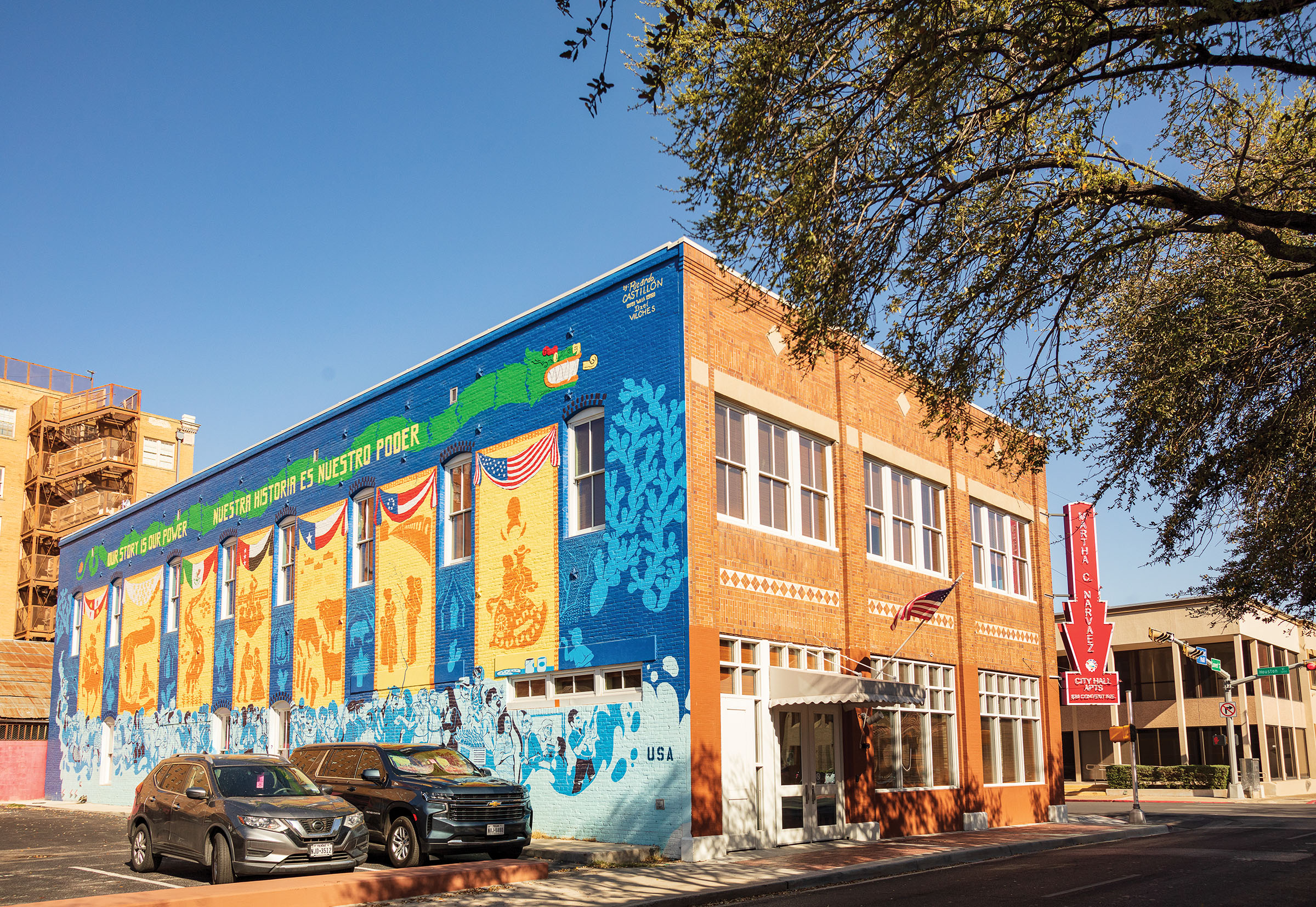
The Webb County Heritage Foundation is a vast portal for exploring Laredo’s rich past. The foundation operates two museums: the Republic of the Rio Grande Museum and the Villa Antigua Border Heritage Museum. They’re both located in downtown Laredo and open year-round, featuring exhibits about Laredo’s origins and historical development. The Republic of the Rio Grande Museum, a Mexican vernacular structure constructed in 1830, has thick walls made of sandstone with lime plaster, hand-quarried and filled with adobe and lime mortar. Located on the storied San Agustín Plaza, it’s one of Laredo’s oldest buildings.
Exhibits at the museum trace Laredo’s founding to 1755, more than 230 years after the Spanish “conquering” of the Aztec empire, when Captain Tomás Sanchez was granted permission to settle 15 leagues of land near a ford on the north bank of the Rio Grande. He named it San Agustín de Laredo. By then, many Spanish settlements existed along the Rio Grande, most founded by José de Escandón, known as the colonizer and first governor of Nuevo Santander, a Spanish colony that comprised the present Mexican state of Tamaulipas and part of Trans-Nueces Texas. Because Laredo had no missions or presidios associated with its founding, it’s considered the oldest independent settlement in Texas and one of only a few remaining Spanish colonial settlements north of the Rio Grande.
In the century after its founding, Laredo was at the center of multiple tugs of war. When Mexico won its independence from Spain in 1821, Laredo became a Mexican city. Then, in 1836, the Republic of Texas won its independence from Mexico and attempted to claim Laredo.
“People in the region decided they’d had enough,” says Margarita Araiza, executive director of the Webb County Heritage Foundation. “They were being ignored by the government in Mexico City, defending themselves from Native American attacks in a region that was very harsh, and then getting incursions from the Texians up north. They weren’t getting help from either side, so they decided, ‘We’ll go our own way.’”
Thus the creation of the Republic of the Rio Grande, established on January 7, 1840 by a constitutional convention that attempted to unite parts of northern Mexico and South Texas. For 283 days, Laredo was the capital of the Republic, until it was defeated by the Mexican army.
“To me, that’s an iconic part of Laredo’s history,” Araiza says, “because it represents what the character of the population was, which was very self-sufficient and self-determined. That continues to this day in the DNA of the population.”
In 1845, the annexation of Texas to the U.S. led to war with Mexico, and the following year, when the war ended, the Rio Grande officially became the international border and Laredo a part of Texas. Those who wanted to retain Mexican citizenship moved across the river and founded Nuevo Laredo, Mexico, Laredo’s sister city. Today, Laredo is one of only a few Texas cities to have been governed under seven flags: the Spanish, French, Mexican, Republic of Texas, Confederate, United States, and Republic of the Rio Grande.
“Some people like to say we’re one city in two nations,” Araiza says. “We’re both Americans and Mexicans. We’re in the middle of two worlds, and that’s a good thing. We really are our own republic.”
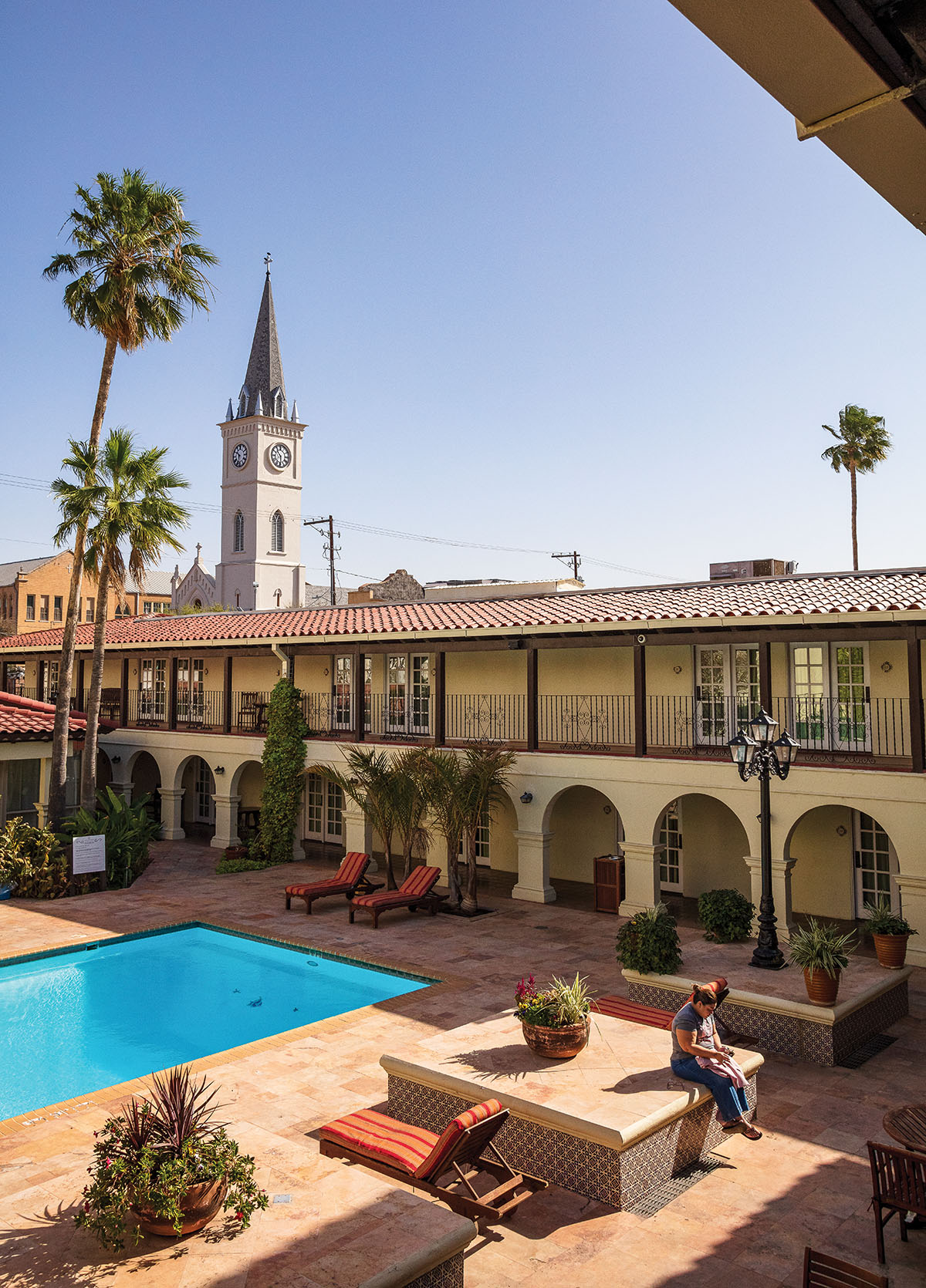
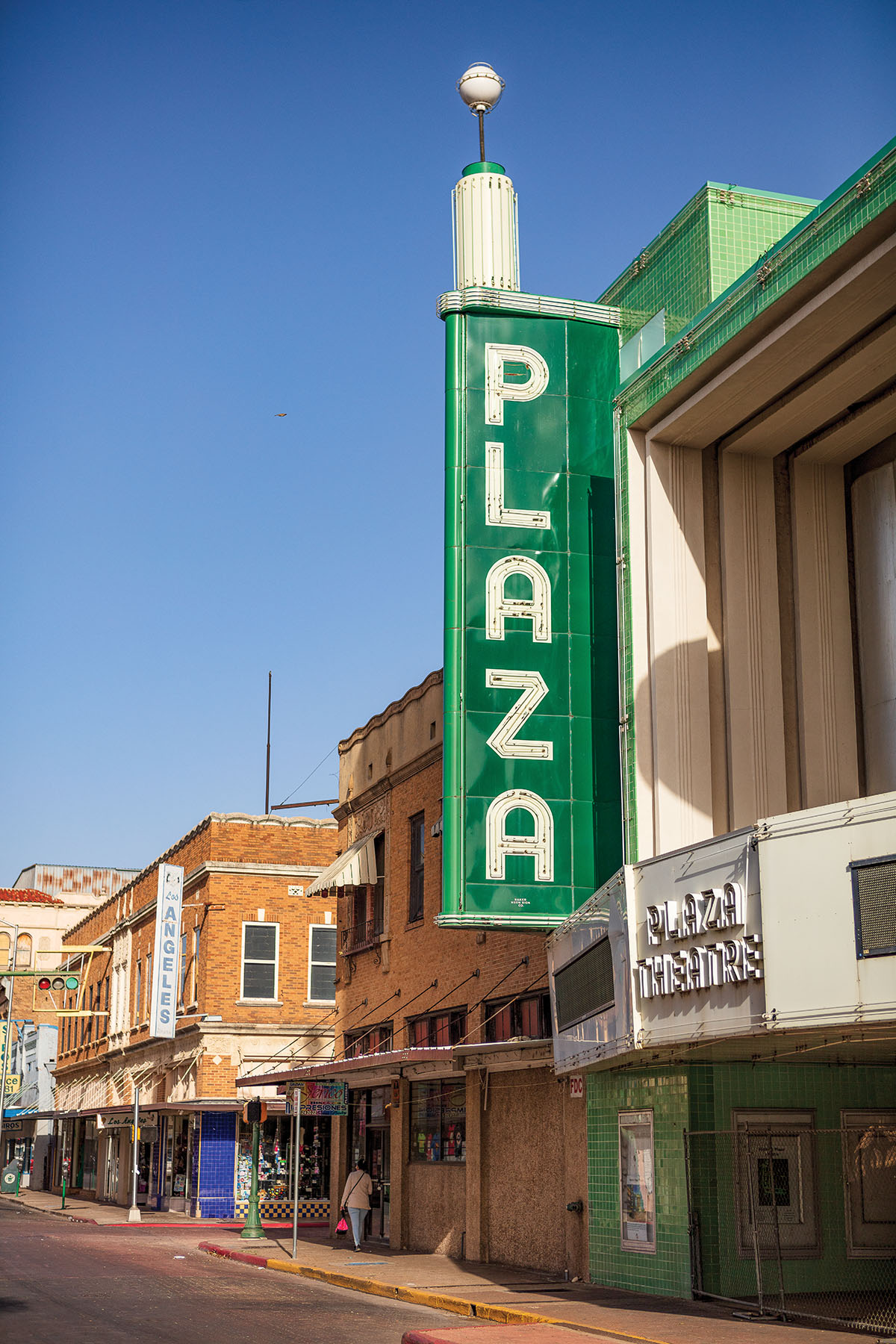
The Plaza Theatre is located on West Mills Avenue
Growing up, I took for granted the way signage was in both English and Spanish, how we cracked cascarónes on Easter, how on Sundays at my grandpa’s house it wasn’t the “ice cream man” who drove by but the “raspa man,” from whom we’d buy a Pickle on Ice—a whole dill pickle shoved into shaved ice, with a straw to suck out the pickle juice.
As a young writer, I didn’t know how to show the specificity of border culture. I’d never encountered such a place or people in fiction before, so I set all my stories in nameless big cities—sleek, vague skylines upon which a reader might attach their own memories of places I’d never been. The stories were blurry and indecisive, more like parables than meaningful narratives. Where we live, after all, tells a story about who we are. Without a concrete place for my characters to plant their feet, I knew almost nothing about them.
When I started writing a novel about a woman living a double life, Laredo seemed the only place to set it. Where better to explore the duality inside all of us than a city that is always both and neither?
One afternoon, as part of my book research, my mom and I went downtown, where she’d spent a lot of time as a child. She pointed out where my grandfather had helped her nanny’s husband, Aurelio Arrellano, open his shoe repair shop; where she used to buy a bag of pistachios salted white for a dime at City Drug, a now-closed apothecary. I’d always known downtown as rundown, but when my parents were growing up, it was the thriving heart of the city.
There are four vehicular international bridges in Laredo. Until drug violence began escalating in Nuevo Laredo in the early 2000s, crossing the border was a routine part of life for both Mexicans and Americans, who drove from one side to another to shop, eat, drink, visit family, and seek medical care. My mom and her siblings used to walk across the pedestrian bridge, a footbridge that today requires a $1 toll and a passport, PASS card, trusted traveler card, or enhanced driver’s license approved by the Western Hemisphere Travel Initiative. They would visit Josefina Arrellano, their nanny and my daughter’s namesake, who moved in with us when I was born. Fina, as they called her, bought them cold glass bottles of Mexican Coke sweetened with real cane sugar.
When I was born in 1984, Laredo was in the middle of an international recession. For a while, the city’s economy had been protected from the U.S. recession because of Mexican activity, but when the peso devalued, Laredo crashed twice as hard. Hundreds of retail stores downtown closed, and a third of the city was unemployed, up from just over 10% several years earlier, according to a report from the U.S. Bureau of Labor Statistics.
My mom was teaching at Laredo College (Laredo Junior College, at the time), and my dad owned an electrical supply store. He moved up to Austin for a time, sleeping on a warehouse floor at night and trying to drum up business for the store during the day.
“It was a big blow to downtown,” Araiza says of the peso devaluation. “But it wasn’t a knock-out blow. Once the pandemic hit and the international bridges were closed for more than a year—the first time since the Mexican Revolution—frankly, for some it was the last straw. We have a lot of boarded-up storefronts. But if you look carefully, you’ll see the beautiful architecture that still exists and that is just waiting to be restored or rehabilitated into something new.”
When the museums were closed for three months in the first surge of COVID-19, Araiza says, the owners of an empty storefront allowed them to use their windows for a historical display. On the corner of Grant Street and Lotus Avenue, passersby can still see the exhibit, which revolves around an 1886 shootout in the St. Agustín Plaza between two political factions.
These days, you can see the possibility of downtown Laredo coming to mean something different to a new generation. On Iturbide Street—newly nicknamed “IT Street”—a host of locally owned bars and restaurants have opened, including Downtown Drafthouse, Happy Hour Downtown Bar, and Cultura Beer Garden. The Pan American Courts, a historic landmark motel and café built in 1946, are a venue for arts and entertainment groups, including Schwartz Gallery. And city officials recently designated $12 million toward renovating the 1940s-era Plaza Theatre.
When I was a teenager, my chief complaint about Laredo was there was nothing to do if you didn’t go across the border, where the legal drinking age was 18. But by then my parents feared the violence in Nuevo Laredo, so I was not allowed to cross. Instead, on weekend nights, my friends and I frequented the Outback Steakhouse or Chili’s on San Bernardo Avenue. We haunted the Starbucks that appeared on Del Mar around the time we graduated. Of course, we groaned. Now we get something good, when we’re about to leave.
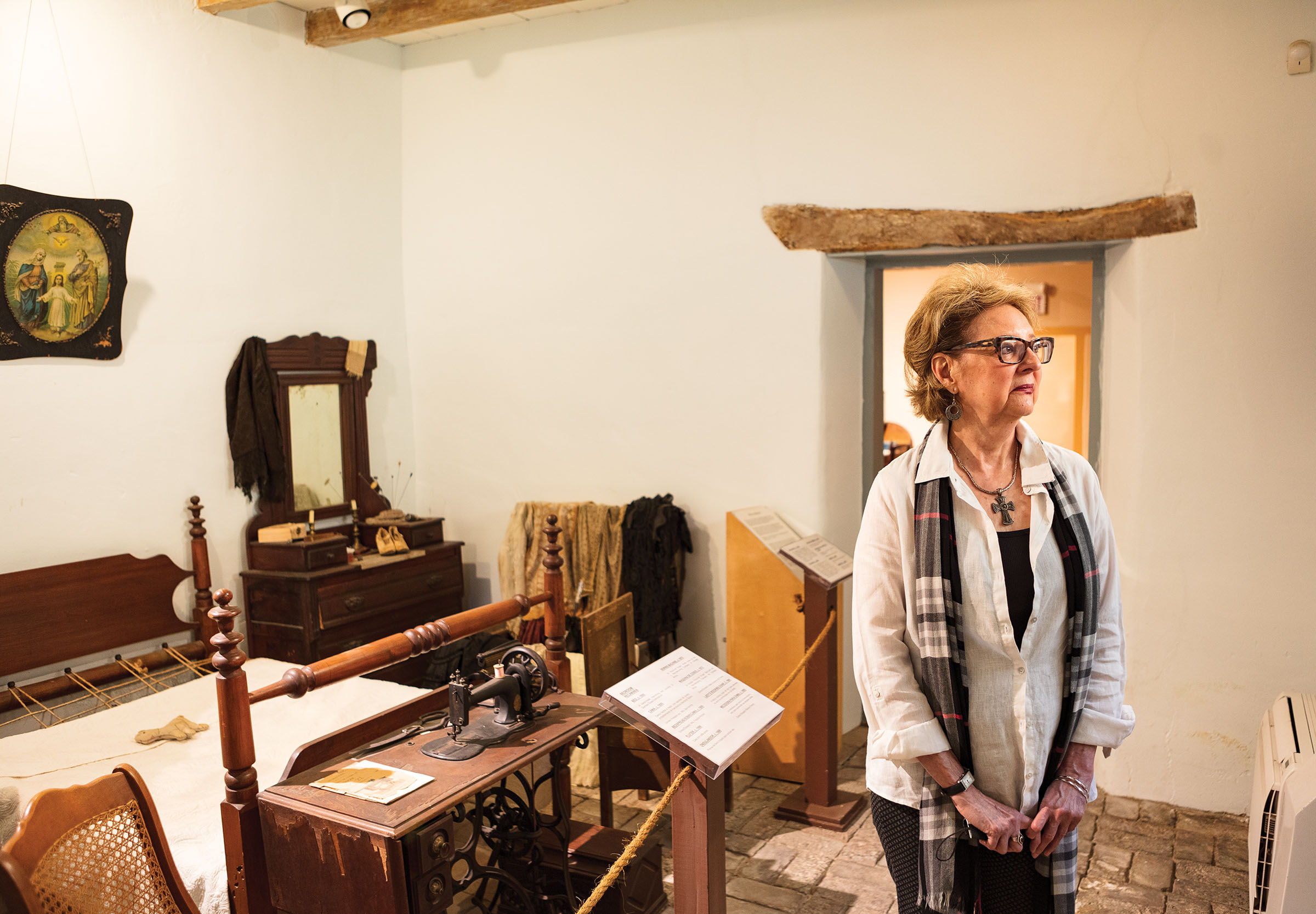
Today in Laredo, some of the most exciting new ventures are locally owned. In 2018, Telissa Molano, Linda LaMantia, and Alyssa Cigarroa, the latter a city council member, founded the Laredo Cultural District to get three distinct parts of the city—Avenida San Bernardo, El Centro, and Fort Mac—officially recognized as cultural districts by the Texas Commission on the Arts. The designation as a cultural district can help attract artists and cultural resources to the community, preserve historic buildings and landmarks, boost tourism, and enhance economic development. Now the organization is headquartered in Casa Ortíz, the oldest continually occupied residence in South Texas.
“We are helping amplify and embrace our cultural uniqueness while improving our quality of life,” Molano says. “Our city is challenged by low income, so free and accessible outreach provides a great opportunity for our area. We are culturally dependent on ourselves to embrace and keep our heritage alive.”
The organization has revived the Caminarte art walk on the first Friday of the month, where venues downtown will offer exhibits, live music, and food. Molano says they’re working toward creating an arts and culture festival in October to celebrate Indigenous Peoples Day. And the organization is collaborating on an exhibit to share the history of the five generations who lived in Casa Ortíz.
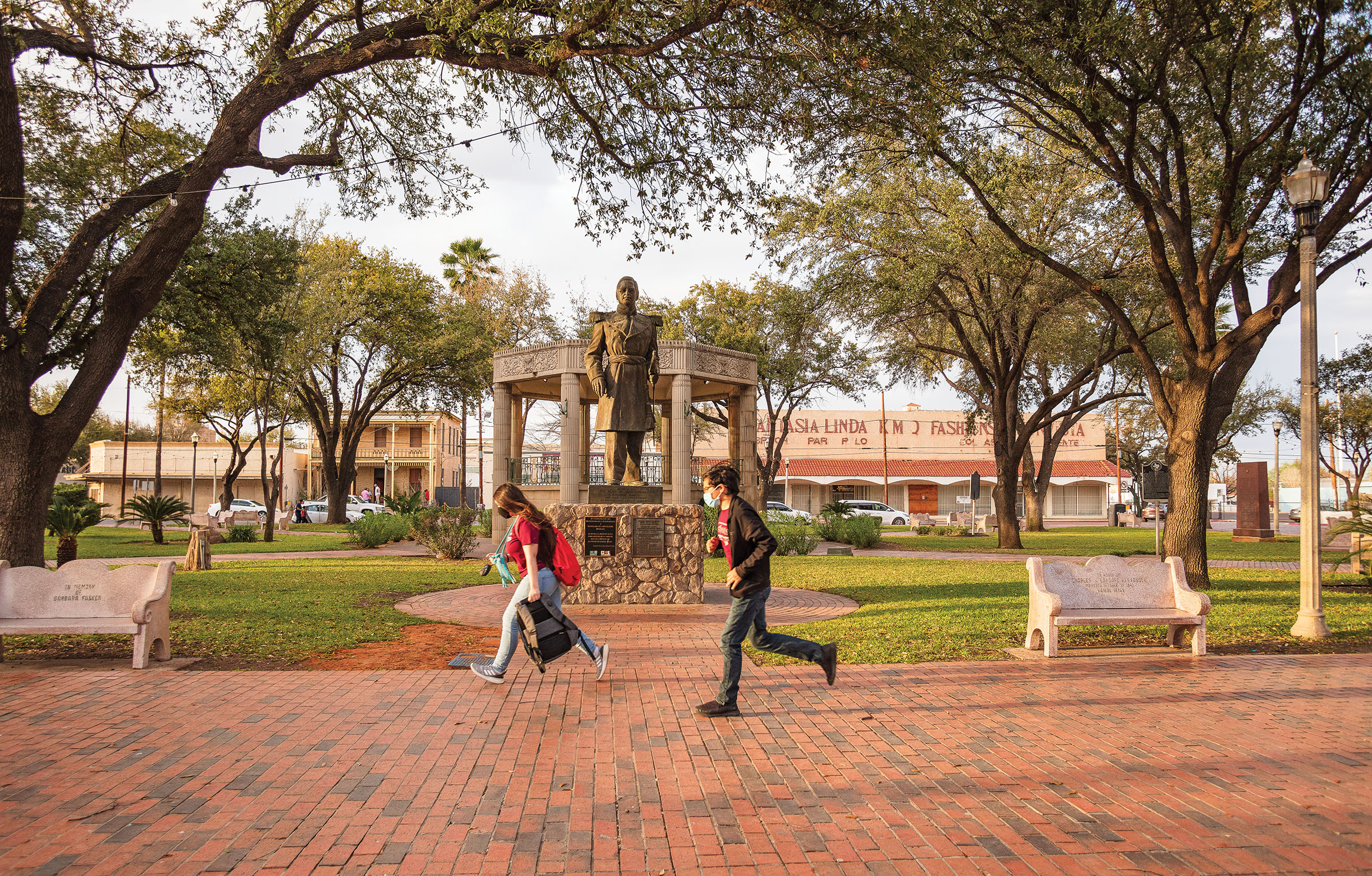
A statue of Ignacio Zaragoza Seguín in San Agustín Plaza
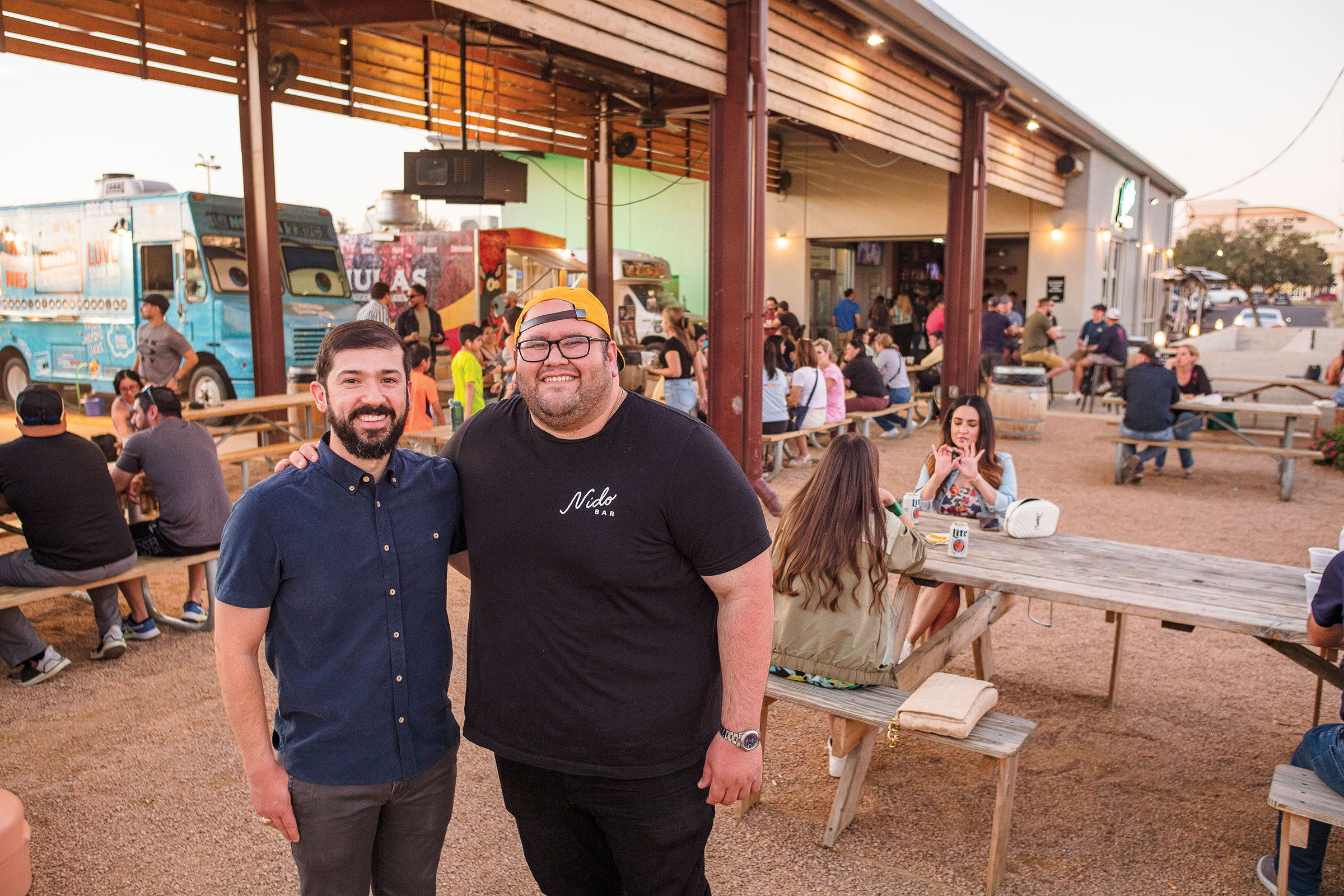
North Laredo, too, is benefiting from a generation of Laredoans who left for college and then brought their ideas back home.
Gerry Salinas thought he would get his master’s degree in accounting or real estate after graduating from Texas A&M University. His plan was to establish himself in Dallas, Chicago, or New York before coming home to work in the family real estate business. But after his father was diagnosed with cancer, Salinas came straight back to Laredo.
“We didn’t know how much time he had,” Salinas says. “The concern was learning the family business as quickly as possible so my father could focus on his treatment.”
It was 2008, and the U.S. was sinking into a recession. After a long crawl out of its depths, Salinas hit a wall when his father passed away in 2014. The next year, Salinas began dreaming of a new venture.
“Life is short,” he says. “I started thinking about what interested me and what Laredo could benefit from, something I would be adding to the city. Because I’m in Laredo for the long haul.”
Salinas began mulling over the concept of food truck parks, which he’d enjoyed in bigger cities. “A food truck is a staple of Mexican culture,” Salinas says, “but it was always a mobile truck, like the raspa truck. It was never a permanent fixture.”
Salinas was walking in North Central Park in North Laredo when he saw the undeveloped site of what would become Golondrina Food Park. Salinas envisioned an inviting, shaded outdoor area feeding off the energy of diverse, chef-driven food trucks, anchored by a craft cocktail bar.
“Golondrina means swallow [a type of bird] in Spanish,” Salinas explains. “Sailors used to get swallow tattoos as a symbol of home because once they saw the swallows, they knew they were close to shore. And swallows mate for life. So, they’re a sign of loyalty and family.”
Salinas enlisted his longtime friend, Jaime Campos, to be his partner and manager of Bar Nido, as in, “nest.” Finally came the food hall, offering a large air-conditioned space with various vendors, including El Horno Pizzeria, Velo Bike Shop + Repair, and Pícate Mucho, a chilito candy shop.
The project took years to develop. When Golondrina opened in 2019, Salinas says people complimented him by saying it “felt like Austin.” In response, he’d say, “No, it feels like Laredo.”
I never moved back to Laredo after I left. Where I live now, all the signs are in English. My kids have never had a Pickle on Ice. I speak Spanish to them knowing they only grasp a word here or there. Sometimes I feel there’s a piece of me missing that only clicks into place when I return home.
In many ways, the novel I wrote about a woman living a double life between Laredo and Mexico City is a book about love and the complicated ways it can multiply and fracture. The novel, More Than You’ll Ever Know, is also a love letter to my hometown. I hope when people from the border read it, they see themselves in all their beautiful duality, always both and neither.
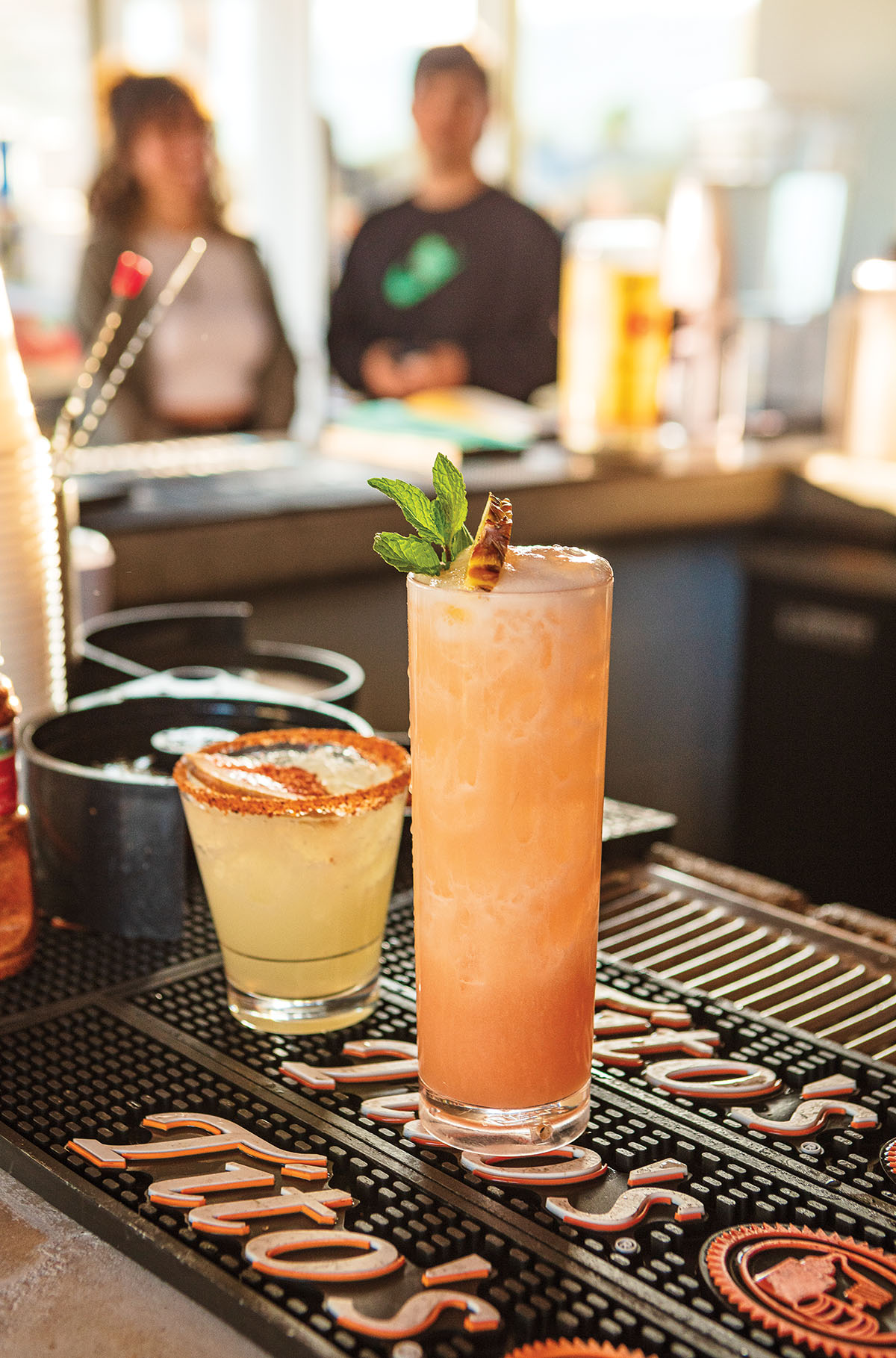
Cocktails from Bar Nido
Comer y Beber
Eat and drink like a local on your next visit to Laredo.
Border Foundry Restaurant & Bar
Named after the Border Foundry & Machine Company, established in 1922, this is fine dining with a twist—think fried oyster nachos. 7718 McPherson Road. 956-724-5907; borderfoundrylaredo.com
Tabernilla
For a taste of Spain in South Texas, this tapas bar serves paella, patatas bravas, albondigas, or tabla de carnes y quesos (charcuterie board) with house-made sangria. 7124 Bob Bullock Loop. 956-523-0989; tabernillalaredo.com
Cultura Beer Garden
After exploring Laredo’s Cultural District, enjoy a cold one in the Pan American Courts for casual outdoor ambiance and live music. 916 Salinas Ave. 956-568-6697; culturabeergarden.com
Golondrina Food Park
Cool down after a walk in the park with a cocktail from Bar Nido and dinner or a snack from a multitude of eateries. 10211 Golondrina Drive. 956-282-3127; golondrinafoodpark.com
Taco Palenque
Grab a late-night pirata (fajitas, beans, and cheese folded generously into two flour tortillas) from one of Taco Palenque’s several locations, open 24/7. tacopalenque.com
